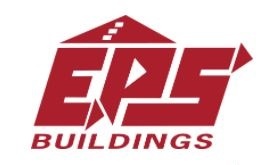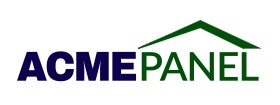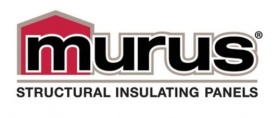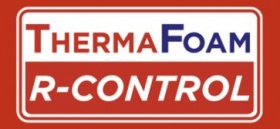Frequently Asked Questions about SIPs
Click here to download these SIP Questions and Answers for future reference.
Structural insulated panels (SIPs) are high-performance building panels used in floors, walls, and roofs for residential and light commercial buildings. The panels are made by sandwiching a core of rigid foam plastic insulation between two structural facings, such as oriented strand board (OSB). Other skin materials can be used for specific purposes. SIPs are manufactured under factory controlled conditions and can be custom designed for each project. The result is a building system that is extremely strong, energy-efficient and cost effective. Building with SIPs will save you time, money and labor.
Why do in seven steps with conventional stud-framed Construction what you can do in only three innovative steps with SIPs?
Here are nine top benefits of panelized construction with SIPs:
- Speed
- Quality
- Accurancy
- Efficiency
- Waste Reduction
- System Integration
- Machine Learning
- Automated BOM
- Automated Scheduling
Video explanation clip "Why Panelized Construction with SIPs" (00:36 minute)
SIP homes go up much faster than traditionally framed buildings. A properly trained SIP installation crew can cut framing time by 55 percent compared to conventional wood framing, according to a third-party study conducted by R.S. Means. Panels are manufactured as big as 8-foot by 24-foot, so entire wall and roof sections can be put up quickly, reducing dry-in time. SIPs are ready to install when they arrive at the jobsite, eliminating the time needed to perform the individual jobsite operations of framing, insulating and sheathing stick framed walls. Electrical chases are typically provided in the core of panels, so there is no need to drill through studs for wiring.
Builders can save money through decreased construction and labor costs. A high-performance building envelope often allows HVAC equipment to be downsized and ductwork to be minimized. Builders can also significantly reduce jobsite waste disposal and temporary heat during construction. Homeowners that incorporate other energy-efficient features into a SIP home can see utility savings of 50 percent or more. In a 2021 example for a typical 2,000 sf home, using SIPs saves over $16,000 in eliminated 2 x 4 raw material costs alone due to the high costs of lumber versus OSB used for SIPs. Refer to a 2021 blog on this topic.
Structural insulated panels are one of the most environmentally responsible building systems available. A SIP building envelope provides continuous insulation, is extremely airtight, allows for better control over indoor air quality, reduces construction waste, and helps save natural resources. Life cycle analysis has shown that SIP homes have a tremendous positive environmental impact by reducing energy use and greenhouse gas emissions throughout the home’s life cycle. SIP designs can save 45% more CO2 with a 5.1 year energy payback and a 3.8 year greenhouse gas payback compared to stick framing examples. Learn more on our sustainable building page.
The structural characteristics of SIPs are similar to that of a steel I-beam. The OSB facers act as the flange of the I-beam, while the rigid foam core provides the web. This design gives SIPs an advantage when handling in-plane compressive loads. SIPs are used for high wind designs in excess of 180 mph and are approved for Florida's strict High Velocity Hurricane Zones (HVHZ). The load-bearing area of SIPs is equivalent to building with 2 x 10 framing at 16 inches on center.
SIPs can be engineered for most applications. Detailed information on the structural performance of SIPs is available from SIPA member manufacturers. For more information, download the free SIP Design Best Practices 3 - SIP Structural Capabilities.
A high-performance SIP building enclosure often allows smaller HVAC equipment to be specified. It is important to work with a qualified HVAC professional that can accurately estimate the low levels of air infiltration in a SIP home or commercial building. Proper HVAC sizing is crucial because an oversized HVAC system will fail to reach the steady operating rate the equipment was designed for. Short cycling HVAC equipment will be less energy-efficient and require more maintenance than properly sized HVAC equipment. For more information, download the free brochure SIP Design Best Practices 2 - HVAC Systems with SIPs.
SIP buildings are extremely airtight with air leakage rates well less than 3 air changes per hour at 50 Pascals of pressure (3.0 ACH50) and require mechanical ventilation. Ventilation systems bring fresh air into the building in controlled amounts and exhaust moisture laden and stale air to the outside. By limiting air exchange to controlled ventilation systems, SIP homes allow for all incoming air to be filtered for allergens and dehumidified, creating better indoor air quality. Proper ventilation is important in all homes to preserve indoor air quality. For more information, see SIPA's 50-minute educational video Integrating Mechanical Systems with SIPs.
The airtightness of the SIP building envelope prevents air from gaining access to the interior of the home except in controlled amounts. A controlled indoor environment is both healthy and comfortable. Humidity can be controlled more easily in a SIP home, resulting in a home that is more comfortable for occupants and less prone to mold growth and dust mites.
Like all wood frame buildings, SIPs present a manageable fire risk when their construction meets the fire precautions listed in the building code. Residential codes typically require the application of a 15-minute fire-resistant thermal barrier on the interior for all residential structures, accomplished by applying 1/2-in. thick gypsum board or a material of equivalent thermal performance.
Light commercial or multi-use buildings of Type V Fire Rated construction often require a one-hour fire rating and/or sprinkler systems. Many SIP manufacturers can provide tested assemblies for both walls and roofs that meet the one-hour fire resistance tests outlined in ASTM E 119. Check with your local manufacturer for specific assemblies.
Many SIPA manufacturers participate in Intertek's one-hour fire listing for specific SIP assemblies.
SIPs are compatible with almost any building system. Wall panels can sit on a variety of foundation materials, including poured concrete, blocks, or insulated concrete forms. SIPs are sized to accept dimensional lumber and are seamlessly compatible with stick framing. Builders may choose to build with SIP walls and a conventional truss roof or with stick walls and a SIP roof with little difficulty. SIPs are also popular as a method of providing a well-insulated building enclosure for timber frame and steel structures.
High-Performance Timber Frame SIP Home in Weaverville, North Carolina
Carolina Timberworks SIP Workshop in West Jefferson, North Carolina
LEED Platinum Timber SIP Classroom in Duluth, Minnesota
The majority of construction with SIPs is very similar to conventional framing. SIPs accept dimensional lumber and are fastened together using staples, nails or screws. Proper sealing is very important when assembling SIPs. All joints need to be sealed with specially designed SIP sealant or expanding foam sealant, and in some cases self-adhesive SIP tape. SIPs also require consideration of how panels will be staged and placed on the jobsite. Although smaller 8- by 4-foot panels can be set by hand, larger 8- by 24-foot panels require the use of equipment to unload and set. For more complete information, download the free brochure Building with SIPs: NEED TO KNOW.
Video explanation Clip for:
Onsite modification can easily be done using a few additional SIP specific tools. Oversized panels can be cut using a beam saw or a beam cutting attachment to a circular saw. The foam core can then be recessed for splines or dimensional lumber using a hot wire foam scoop or specialized angle grinder attachment.
Electrical wires are pulled through pre-cut channels inside the core of the panels called “chases.” Chases are added during the manufacturing process according to the electrical design of the home. Electricians can feed wires through panel chases without compressing the insulation or drilling through studs. Video explanation clip "Electrical" (4:51 minutes)

















